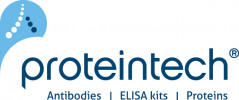© Pint of Science, 2025. All rights reserved.
As the new academic year starts, we'd like to celebrate the hard work of postdocs!
Join us for some FREE food and refreshments and learn about the research and the postdocs behind it, in an informal and friendly environment.
This event is kindly sponsored by Proteintech, including goodie bags and refreshments. They've always been stalwart supporters of both the research and the researchers, so have a chat with your local rep to learn all about their reagents and pipelines.
#NPAW2024 #CelebratePostdocs @proteintech @pintofscience
Join us for some FREE food and refreshments and learn about the research and the postdocs behind it, in an informal and friendly environment.
This event is kindly sponsored by Proteintech, including goodie bags and refreshments. They've always been stalwart supporters of both the research and the researchers, so have a chat with your local rep to learn all about their reagents and pipelines.
#NPAW2024 #CelebratePostdocs @proteintech @pintofscience
Uncovering the secret requirement of human regulatory T cells
Regulatory T cells (Tregs) play a crucial role in maintaining immune tolerance. Recently, Tregs have gained attention as a potential cellular therapy for transplantation and autoimmune diseases. Our group (TRIG: Translational Research Immunology Group, supervised by Prof. Fadi Issa and Prof. Joanna Hester) is currently conducting a Phase II clinical trial (the TWO study) utilizing in vitro expanded Tregs to prevent rejection following organ transplantation.
Although Treg therapy presents a promising strategy to suppress unnecessary immune responses, there are several challenges that must be addressed. The primary obstacles include the inconsistent proliferation of Tregs in culture and the potential loss of their phenotypic stability during the manufacturing process (in vitro expansion).
To optimize T cell culture conditions, many commercial companies are focused on developing modified media designed for prolonged in vitro cultivation. However, the currently available media optimized for T cell expansion predominantly cater to conventional T cells (Tconvs). Recent immunometabolism studies have revealed that Tregs and their immunogenic counterparts, Tconvs, possess fundamentally different metabolic requirements. For instance, Tconvs exhibit a glycolysis-dependent metabolic signature, whereas Tregs rely on oxidative phosphorylation. Therefore, the development of Treg-specific media is an urgent necessity for expanding Treg cellular therapies.
As part of our culture medium development strategy, we have decided to separate the culture medium into three compartments based on molecular size: a low fraction containing nutrients such as glucose and glutamine, a medium molecular fraction containing large molecules such as growth factors, and a high fraction containing proteins. We will utilize various investigative strategies to explore each fraction.
As a preliminary result, we identified that human Tregs have a fundamental requirement for lactic acid under glucose-deprived conditions, along with other clues from each fraction. I welcome any advice for our future investigations during my presentation and potential collaboration on this topic.
Although Treg therapy presents a promising strategy to suppress unnecessary immune responses, there are several challenges that must be addressed. The primary obstacles include the inconsistent proliferation of Tregs in culture and the potential loss of their phenotypic stability during the manufacturing process (in vitro expansion).
To optimize T cell culture conditions, many commercial companies are focused on developing modified media designed for prolonged in vitro cultivation. However, the currently available media optimized for T cell expansion predominantly cater to conventional T cells (Tconvs). Recent immunometabolism studies have revealed that Tregs and their immunogenic counterparts, Tconvs, possess fundamentally different metabolic requirements. For instance, Tconvs exhibit a glycolysis-dependent metabolic signature, whereas Tregs rely on oxidative phosphorylation. Therefore, the development of Treg-specific media is an urgent necessity for expanding Treg cellular therapies.
As part of our culture medium development strategy, we have decided to separate the culture medium into three compartments based on molecular size: a low fraction containing nutrients such as glucose and glutamine, a medium molecular fraction containing large molecules such as growth factors, and a high fraction containing proteins. We will utilize various investigative strategies to explore each fraction.
As a preliminary result, we identified that human Tregs have a fundamental requirement for lactic acid under glucose-deprived conditions, along with other clues from each fraction. I welcome any advice for our future investigations during my presentation and potential collaboration on this topic.
What if the key to improve heart regeneration is low oxygen?
In humans, new-born infants have the ability to regenerate their heart during early life. This is modelled in the mouse, where regenerative capacity is maintained for the first week after birth but lost thereafter. Here, we explore a role for hypoxia and HIF signalling on the regulation of epicardial activity, essential for heart development and the response to injury. Hypoxic regions were found in the epicardium from mid-gestation, associating with HIF1α and HIF2α, and expression of the epicardial master regulator Wilms’ tumour 1 (WT1). Epicardial deletion of Hif1a reduced WT1 levels, leading to impaired coronary vasculature. Moreover, targeting of the HIF degradation enzyme PHD through pharmacological inhibition with a clinically approved drug or epicardial-specific deletion stabilised HIF and promoted WT1 activity ex vivo.
A combination of genetic and pharmacological stabilisation of HIF during neonatal heart injury led to prolonged epicardial activation, increased vascularisation, augmented infarct resolution and preserved function beyond the 7-day regenerative window. Together, these findings suggest therapeutic modulation of HIF signalling may represent a viable strategy for treating ischaemic heart disease.
A combination of genetic and pharmacological stabilisation of HIF during neonatal heart injury led to prolonged epicardial activation, increased vascularisation, augmented infarct resolution and preserved function beyond the 7-day regenerative window. Together, these findings suggest therapeutic modulation of HIF signalling may represent a viable strategy for treating ischaemic heart disease.
Map data © OpenStreetMap contributors.
